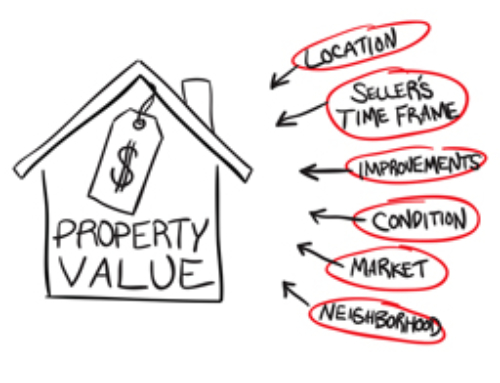 9 Things You Should Do to Get the Mortgage of Your Dreams
9 Things You Should Do to Get the Mortgage of Your Dreams
By Sue Stewart, MortgageMatch.com
Sue Stewart of MortgageMatch.com has more than 15 years of executive experience in mortgage finance and 27 years in the industry. She has overseen all aspects of major mortgage banking operations for leading home builders and real estate brokerage firms.
It’s gotten a lot harder to get financing. In fact, one-third of all borrowers can’t qualify for a mortgage. That’s because lenders have created more hoops for borrowers to jump through.
You might just need some new tools in your toolbox. Here are nine things you should do to get the mortgage of your dreams.
1. Pay down your debt as much as you can before applying for a mortgage.
Lenders calculate the ratio of your debt to your income to determine how much you can afford to borrow. Your total debt-to-income ratio is based on how much of your gross income would go toward all of your debt obligations, including mortgage, car loans, child support and alimony, credit card bills, student loans, and condominium fees. The debt-to-income ratio is calculated in two ways: one for all of your monthly liabilities versus income (known as your back-end DTI ratio), and one for just your monthly housing payment (including monthly mortgage payment, real estate taxes, and homeowner’s insurance) versus income (this is your front-end DTI ratio). Your back-end ratio is more important. It should be less than 40 percent, and your front-end ratio less than 30 percent.
By reducing your debt as much as you can, you will improve your debt-to-income ratio and your credit score.
2. Clean up your credit.
Credit is critical today, not just for getting a mortgage, but for getting a mortgage on the best terms. If you have a marginal credit score when you take out a mortgage, it can cost you tens of thousands of dollars over the life of the loan. Your score on the FICO credit rating scale (whose range is 300 to 850) must be 680 today to qualify for a prime loan and at least 720 to get access to today’s best rates. Get your credit history from each of the three credit bureaus—Equifax, Experian, and TransUnion. Review them carefully and clean up errors. Get started early, because it could take months.
3. Don’t make a major purchase on credit and don’t apply for new credit before you apply for a mortgage or at any point before your mortgage closes.
A major purchase or a new credit account is going to increase your debt and negatively affect your debt-to-income ratio. Lenders don’t just check your credit report on the day you apply for a loan; many will also check it right up to the day you close on a home. If you take on a new credit obligation, the lender has to recalculate your debt-to-income ratios, and you could be turned down for a loan at the last minute.
4. Increase your down payment.
Most buyers know that down payment requirements are much stricter today than they were just a few years ago, though low down payment options are available, such as the Federal Housing Administration’s 3.4 percent loans, state housing authority programs, and VA for veterans. On the commercial market, it’s hard to get a mortgage with less than 20 percent down.
If you can swing it, try to increase the percentage of down payment you will pay, either by buying a less expensive house or finding additional cash. A larger down payment affects another important ratio that lenders use, the loan-to-value ratio, or LTV. A larger down payment reduces the size of the loan relative to the value of the home, which improves the LTV and the odds that you will get a loan on better terms. Of course, the less you borrow, the lower your monthly payments will be, which improves your debt-to-income ratio as well.
5. Get ALL your documentation together in advance.
Lenders are tougher than ever in requiring documentation of income, assets, and financial obligations. Don’t wait. When you apply, be ready to provide all the documentation necessary to establish your income and debt, including payroll stubs, tax returns, W-2s, bank statements, investment accounts, student loans, auto financing statements, and credit card statements. If you are applying with another person, both of you must provide documentation. If you are self-employed or if your income varies—for instance, if you’re a salesperson who receives commissions—be ready to provide all the paperwork you can, including pay stubs and contracts with clients.
6. Know and prepare for your cash requirements.
Many buyers are shocked and unprepared when they discover that the cash expenses required to buy a home, in addition to the down payment, can be significant. Today, closing costs can run into the thousands, and they are on the rise. They vary by local laws and customs, but typically include transfer taxes, lenders’ fees, title insurance, escrow, settlement, and home inspection. Lenders are required to give borrowers a binding estimate of all closing costs when their loan application is approved, but buyers are wise to do their own homework so that they are prepared. Sites like MortgageMatch.com give buyers good estimates of most of the closing costs they will incur, and you can see what your closing costs will be for each house you consider—before you make an offer.
7. Avoid jumbo mortgages.
Jumbo mortgages are those that exceed $417,000, in most parts of the country. In high-cost areas like New York City, Washington D.C., Miami, and many parts of California, jumbos begin at $729,750. These limits are the most that Fannie Mae and Freddie Mac will pay for a mortgage, which means that jumbos must either stay with the lender that originates them or be securitized privately. Consequently, jumbo rates are higher, because they pose more risk to the lender. Because they are accepting more of the risk, jumbo-loan lenders require strong credit, a down payment of 20 to 30 percent, and proof of income. At times in recent years, jumbos have been hard to find, which can raise their costs even more.
Borrowers can reduce their
interest costs and improve their chances of qualifying by staying under the limit for jumbo mortgages, either by increasing their down payment or decreasing the cost of the house they buy.
8. Negotiate a purchase price lower than the value.
Obviously, getting the best deal is in your best interest. It’s also in your lender’s best interest, because the loan is a better deal for him if he can lend less money for the most value, which lowers your loan-to-value ratio. In today’s marketplace, many sellers are willing to deal. By negotiating hard, you have a good chance of getting the seller to agree to a contract that turns out to be less than the appraised value of the property. Sometimes you can reduce the price by handling certain repairs yourself or by agreeing to rent back if the seller needs some extra time before he is ready to move.
You won’t know exactly what the appraised value of the property is until your lender orders an appraisal, but you can get a good idea. First, check out the property’s value with the valuation tools available on Realtor.com and other sites. You’ll find variance based on the differing databases the computer models use to arrive at a value. Ask your Realtor to do some research on your local multiple listing service to find recent sold data for comparable properties, which are also available on Realtor.com. Should the appraisal come in too low, you can ask your lender for a second appraisal, but you will be charged for it.
9. Don’t fall for phony rates.
When you see attractive rates advertised on the Internet or TV for purchase mortgage or refinancing, be careful. Rates change several times during the day. They differ by locale. They differ for each borrower, based on documentation, credit, loan-to-value ratio, debt-to-income ratios, loan type, and other factors. The rates you see bouncing around on the Internet are the very lowest rates, for borrowers with extraordinary credit and no contingencies. They are not “real” rates offered to borrowers taking out real loans.
What counts is the actual rate you’ll get based on your situation. You can find that out by going to websites like MortgageMatch.com, where you can enter your information anonymously and explore different scenarios based on the rates for which you qualify, or by talking to a variety of lenders.
Sue Stewart of MortgageMatch.com has more than 15 years of executive experience in mortgage finance and 27 years in the industry. She has overseen all aspects of major mortgage banking operations for leading home builders and real estate brokerage firms.






